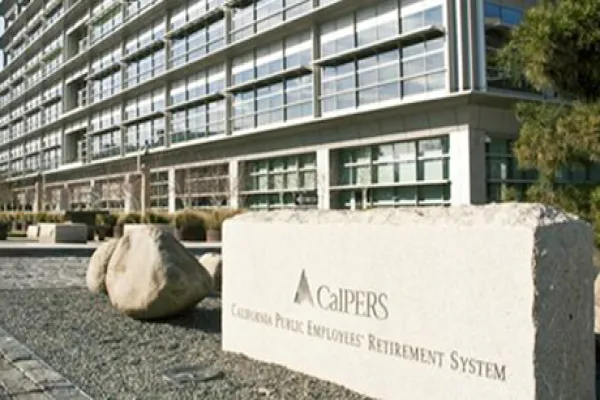The investment experts at Franklin Templeton spend a lot of time speaking to chief investment officers about “What if . . .” That is, the most beneficial discussions come from exploring the implications of what might happen—not guessing the future—and being prepared for those risks.
In the following conversation, two key players at Franklin Templeton Multi-Asset Solutions—Wylie Tollette, Head of Client Investment Solutions, and Gene Podkaminer, Head of Multi-Asset Research Strategies—talk through the “what if” of global growth, including the perils of “lazy portfolios” and the potential utility of “defensible space.”
Wylie Tollette: Economic growth is one of those factors that is just so intrinsic and so baked into every element of a CIO’s perspective that you really need to think about it deeply, not just on the asset side, but how growth might impact the liabilities as well.
Economic growth is the primary driver for most investors in terms of their long-term returns and risks. In addition to influencing assets, it has the potential to influence their liability structure and their funding source, which I think many investors need to think about when they’re determining their asset allocation.
I’ll use an example to illustrate the point—take a state pension where a significant part of the funding is derived from the tax revenues of the state. The state’s tax structure may be very dependent on the success of specific industries, say technology or energy, for example. The success of those same industries may have also driven a significant element of the performance of the equity markets. Those same industries influencing economic growth and equity markets may also be impacting returns in real estate and corporate debt, encompassing the bulk of the investment portfolio. In addition, as the state grows, as its industries grow, the public sector grows to support that population, and that will drive the liabilities of the pension plan over the long term. Growth is one of those underlying factors that influence almost all elements of what a typical CIO is concerned about.
Gene Podkaminer: Exactly, I’m primarily concerned with what my investment policy. However, there are two other policies permeated by the growth factor: the funding policy—how I get money—and my spending policy, that’s the fun part—how do I use the money? I need to be aware of what’s happening in the funding policy and the spending policy so that I can craft my investment portfolio around them. If I’m the CIO of a plan that’s heavily geared toward growth in its funding source, then maybe I need to have a real heart-to-heart with my staff and stakeholders about the amount of growth exposure in my investment policy if it’s really driving my funding policy, too. There are tradeoffs that need to be made.
Many portfolios are constructed with a hankering for more exposure to global growth because that’s what drives returns. You need to be cognizant about what happens with interest rates and inflation; but, if things are growing at a nice clip, expectations are properly calibrated for the economy, there’s no crises going on, there’s no geopolitical issues happening, growth is a great place to be. Most portfolios are set up to capitalize on that great place to be. But that’s not always the case.
Tollette: For the last 10 years, which for many investors feels like the long term, growth has largely been driven, particularly in developed markets, by coordinated monetary policy activities from central banks. That has created a little bit of the Goldilocks scenario that Gene mentioned, particularly in developed markets where you’ve had relatively low interest rates—historically low in some places, even negative in a few spots. This scenario has driven volatility down and driven continued participation in the equity markets. It has also driven valuations in many of growth and liquidity driven asset classes up pretty high.
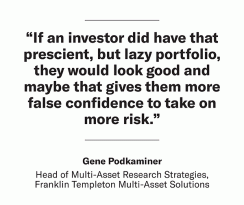
As plans have experienced relatively healthy returns, there is that desire to creep out on the risk spectrum because how bad could things possibly get? They’ve been great over the last 10 years. That’s why I often look far back, because there’s a humility involved in all of this. We recognize that while we can’t control returns, we certainly can control risks. Just as global growth contributes to most of the return that’s coming from portfolios, it’s also an outsized contributor to risk. If I put my risk management hat on and nearly all of the risk in my portfolio is coming from global growth, I need to have a serious conversation with my stakeholders telling them, “Hey, this may have worked over the last couple of years, but I don’t necessarily expect it to work over the next five or 10. We need safety measures in a portfolio that allow us to reduce risk and potentially give up on some of that economic growth exposure so that we can be more diversified and more broadly exposed.”
Tollette: I’ve been hearing in the news, relative to the wildfires in the Western US, more and more talk about the concept of “defensible space.” Homeowners who build defensible space around their structures when they have the opportunity before the fire emerges, they’re the ones whose homes have survived.
The term “defensible space” strikes me as very important for investors to consider building into their portfolios, relative to their exposure to economic growth, because fires can emerge in economic markets. Growth tends to move a little bit more slowly, but recessions can emerge fairly quickly—climbs like a feather on the wind, but falls like stone. Recessions can be triggered by a wide variety of things. Trade wars, emerging market crises, populism—these are all things that in the past have triggered wildfires across capital markets. The reason they trigger those fires is because they change expectations for future growth and how that growth is valued and discounted into today’s asset values, driving rapid revaluations of those expectations.
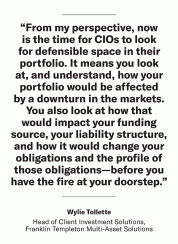
Podkaminer: It’s like the concept of insurance, where you pay a premium month after month, and there is some small chance of a catastrophic outcome in which case you’ll recoup that investment. But the way that humans are wired means that our reptilian brains have a hard time with that concept. When things are good, we extrapolate out in a linear fashion that everything is going to remain hunky-dory.
Tollette: I think they call it recency bias—where the recent past is how you think the future is going to work.
Podkaminer: We’re really poor at predicting inflection points. We’re not at one, but we should always be thinking about inflection points and positioning portfolios to take advantage of them. You’ve got to be prepared for what may happen. If that means using diversification as a form of insurance, I think that’s a pretty good trade. From a governance perspective, all your stakeholders need to be aligned.
Tollette: Again, I’d be looking for hedges and diversification that still have a positive return. We’re looking for positive carry investments that still diversify equity growth. Things like smart beta strategies are the first step down that path. Other asset classes that have exposure to other fundamental factors, such as interest rates and inflation, would be the next logical step. Those factors also tend to diversify economic growth, and now is the time for investors to really examine that and begin building that into their overall longer-term perspective. Finally, looking at alternatives sources of return that are not correlated with the other assets, like risk premia. What is key is not looking backward to drive your forward-looking asset allocation. Let’s look forward. What are we expecting? Let that help influence our asset allocation.
Podkaminer: If I’m a CIO and I have a pie chart of all of my investments and it looks like I have all these different slivers, and they have different names and titles and somebody has helped me put them all together, I feel really content. But, if I look closer, I see that there’s really only two or three big pieces on that pie chart. Those are the asset classes that are all exposed to equity-type risk—largely driven by global growth—and then my real assets, things that help me get exposure to the real economy and to inflation. Then my assets that are sensitive to what happens with interest rates, so primarily treasuries in the US and sovereign bonds elsewhere.
It’s important that when we talk about the concepts of diversification and of asset classes that we focus on the big picture. Emerging markets is a sub-asset class. It’s a component of equities, but still equities—a rose, is a rose, is a rose. Developed market equities, emerging market equities, private equity, the equity component of real estate and of infrastructure investing—those are all closely related. When I’m thinking about diversification in my portfolio, fixed income holds a different place in the capital structure than equity does. Compared to equity, it is less impacted by growth and more impacted by interest rates and inflation.
That’s where I think the diversification argument can really start. There’s much more impact in asking whether your equity and fixed income relationship is appropriate, as well as the magnitude of alternatives, than there is in asking if your developed market and emerging market relationship is appropriate. I want to be looking at investments that are different in kind, not different in degree.
Wylie and Gene are happy to speak to you about your “what if” scenarios. Feel free to contact them at solutions@franklintempleton.com:
Wylie Tollette, CFA, CPA
Head of Client Investment Solutions
Franklin Templeton Multi-Asset Solutions
Gene Podkaminer, CFA
Head of Multi-Asset Research Strategies
Franklin Templeton Multi-Asset Solutions
More in the series "What if there are shocks to ... "

Franklin Templeton
| 
Franklin Templeton
| 
FT demographics
| 
Franklin Templeton
|

Franklin Templeton
| 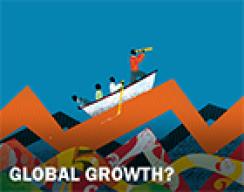
FT-global growth
| 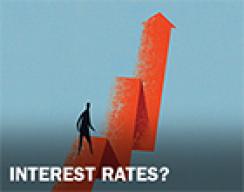
interest rates
| 
FT
|
Disclaimer:
This material is provided for informational purposes only and nothing herein constitutes investment, legal, accounting or tax advice. This material is general in nature and is not directed to any category of investors and should not be regarded as individualized, a recommendation, investment advice or a suggestion to engage in or refrain from any investment-related course of action. All information is current as of the date of this material and is subject to change without notice. Any views or opinions expressed may not reflect those of the firm or the firm as a whole. Franklin Templeton does not accept any responsibility to update any opinions or other information contained in this document. This material may include estimates, outlooks, projections and other “forward-looking statements.” Due to a variety of factors, actual events may differ significantly from those presented.
CFA® and Chartered Financial Analyst® are trademarks owned by CFA Institute.
For US Residents Only
If you would like information on Franklin Templeton’s retail mutual funds, please visit www.franklintempleton.com.
Franklin Templeton Distributors, Inc





